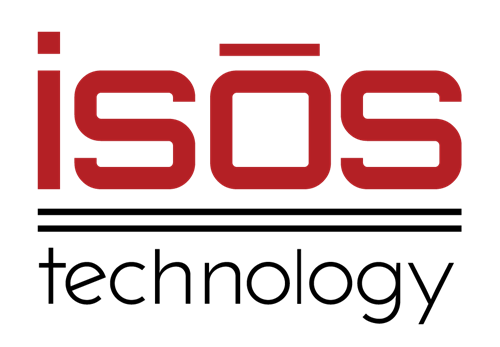When it comes to project management in Fortune 1000 companies, the choice between Atlassian and Asana is a strategic decision with long-term implications for an organization's efficiency and productivity.
As you navigate the complexities of selecting the right tool to streamline your project workflows and enhance collaboration within your team, understanding how Atlassian and Asana cater to the unique needs of large enterprises is essential.
Key takeaways
- Atlassian offers robust customization and detailed workflows for complex projects.
- Asana excels in user-friendly collaboration and task tracking, ideal for team-focused projects.
- Atlassian suits resource-intensive Fortune 1000 projects with a rich ecosystem and strong community support.
- Asana is preferred for more straightforward project needs, emphasizing ease of use and real-time collaboration.
- Choose Atlassian for intricate projects and Asana for streamlined, intuitive task management in large enterprises.
Atlassian vs. Asana
To understand the significance of effective project management in large organizations and introduce Atlassian and Asana as prominent project management tools, let's explore Atlassian's strengths compared to Asana, mainly focusing on its suitability for Fortune 1000 companies.
Atlassian, known for its Jira software, excels in agile project management. It offers a robust platform for complex projects. Jira's customizable workflows, detailed reporting, and integration capabilities make it a top choice for Fortune 1000 companies with diverse and demanding project needs.
Asana, on the other hand, provides a user-friendly interface and is more intuitive for smaller teams or more straightforward projects. However, when handling the scale, complexity, and specific requirements of Fortune 1000 companies, Atlassian's Jira stands out for its advanced features and adaptability.
In this Jira vs. Asana comparison, Atlassian's strength in catering to large organizations' intricate project management needs makes it a preferred choice for Fortune 1000 companies seeking a thorough and agile project management solution.
Understanding project management needs in Fortune 1000 companies
IT leaders and project managers in Fortune 1000 companies often face significant challenges when tackling large-scale projects.
Integration of tools is essential for ensuring smooth operations and efficient collaboration across teams.
Understanding these needs is vital to selecting the right project management solution that aligns with the complex requirements of such organizations.
The complexity of large-scale projects
IT department heads and project management leads in Fortune 1000 companies navigate complex challenges in large-scale projects, demanding a sharp understanding of the intricacies involved.
When tackling these complex endeavors, you encounter various hurdles that demand strategic solutions:
- Resource allocation: Balancing the distribution of resources across multiple aspects of the project becomes a delicate juggling act, where meticulous planning and tracking are paramount.
- Communication breakdowns: Keeping all team members aligned and informed is vital for success. Effectively utilizing team collaboration platforms can help streamline communication and enhance collaboration.
- Risk management: Identifying, evaluating, and mitigating risks in large-scale projects is a constant concern. Project leads must monitor potential risks to prevent disruptions and delays.
In large-scale projects, mastering project planning and tracking, leveraging team collaboration platforms, and adeptly managing risks are essential skills for IT department heads and project management leads in Fortune 1000 companies.
The importance of tool integration
Managing the complexities of large-scale projects in Fortune 1000 companies often hinges on seamlessly integrating tools that work harmoniously with existing systems, facilitating streamlined operations and enhancing overall efficiency.
Having team productivity tools and work management solutions that can easily integrate with current platforms is essential. These integrations save time by eliminating manual data transfer and reduce the chances of errors when switching disparate systems.
By interconnecting all tools, project teams can collaborate more effectively, track real-time progress, and promptly make informed decisions. Seamless integration of tools creates a cohesive workflow, allowing for a more holistic view of project statuses and resource allocations.
This interconnected approach fosters a more productive environment where team members can focus on tasks rather than switching between different applications. In Fortune 1000 companies, where efficiency and precision are key, well-integrated tools are significant in achieving project success.
An overview of Atlassian and Asana
Atlassian is a company known for its collaboration and project management tools suite, which includes Jira, Confluence, and Trello.
On the other hand, Asana offers a platform designed to help teams organize and manage their work more efficiently.
Both Atlassian and Asana have unique histories and features that cater to different project management needs within Fortune 1000 companies.
What is Atlassian?
With a rich history and a diverse range of products like Jira, Confluence, and Trello, Atlassian has established itself as a powerhouse in project management tools. Here's what you need to know about Atlassian:
- Jira: Atlassian's flagship product, Jira, is a robust project management tool known for its flexibility and customization options. It's widely used for issue tracking, agile project management, and software development.
- Confluence: Another key product from Atlassian, Confluence is a collaboration tool that helps teams create, share, and collaborate on projects in one centralized platform. It's popular for its document management and knowledge-sharing capabilities.
- Trello: Acquired by Atlassian, Trello is a visual project management tool that uses boards, lists, and cards to organize tasks and projects in a highly intuitive way. It's favored for its simplicity and ease of use, making it a go-to choice for many teams.
What is Asana?
Asana, a prominent project management platform, offers a user-friendly interface and robust features to streamline task organization and team collaboration.
Founded in 2008 by Dustin Moskovitz and Justin Rosenstein, Asana has quickly become a go-to choice for companies looking to enhance productivity and project management efficiency.
With a focus on simplicity and accessibility, Asana provides various tools to help teams track their work, set priorities, and communicate effectively.
To better understand the differences between Asana and Jira, let's compare some key aspects of both platforms:
| Features | Asana | Jira |
| Task Tracking | Intuitive design | Customizable workflows |
| Collaboration | Team communication | Issue tracking |
| Integrations | Seamless connections | Extensive plugin options |
| Pricing | Tiered plans | Per-user pricing |
When evaluating Asana vs. Jira, consider your team's needs and preferences to determine which platform best aligns with your project management requirements.
Key advantages of Atlassian for enterprise project management
Atlassian offers advanced customization and flexibility, allowing you to tailor workflows to your business needs with Jira's powerful features.
The rich ecosystem of Atlassian tools seamlessly integrates, providing a cohesive project management experience (e.g., Jira's compatibility with Confluence and Bitbucket).
Additionally, Jira's robust reporting and analytics capabilities offer valuable insights into project performance, enhancing decision-making and efficiency.
Advanced customization and flexibility
Tailoring workflows to meet specific business needs is a key advantage of leveraging Jira's advanced customization and flexibility in enterprise project management. When comparing Atlassian vs. Jira, which is known for its robust features, here are three ways Jira stands out in advanced customization:
- Customizable workflows: Jira offers a high level of flexibility in designing workflows, allowing you to tailor processes to match your unique requirements precisely.
- Automation capabilities: Jira's advanced features allow you to automate repetitive tasks, streamline processes, and maintain consistency across projects.
- Integrations and extensions: Jira's extensive marketplace provides a wide range of integrations and extensions, enabling you to effortlessly enhance functionality and adapt the tool to suit your specific project management needs.
Rich ecosystem of tools
Exploring Atlassian for enterprise project management reveals how its seamless integration of tools like Jira, Confluence, and Bitbucket creates a robust ecosystem that streamlines workflows and boosts collaboration.
Jira, a powerful project management tool, seamlessly integrates with Confluence, Atlassian's collaboration platform. This integration allows teams to seamlessly create, share, and collaborate on project documentation. It guarantees that project information remains up-to-date and easily accessible, fostering better communication and knowledge sharing among team members.
Additionally, Jira's integration with Bitbucket, Atlassian's Git repository management system, enhances the development process by connecting issues directly to source code. This link lets developers view code changes, track progress, and maintain version control within the same platform where project management occurs, streamlining the development lifecycle.
Robust reporting and analytics
Enhance your project management endeavors with Jira's robust reporting and analytics capabilities, providing in-depth insights into project performance.
When comparing Jira vs Asana, Jira's reporting tools stand out for their thorough analysis and visualization features. Here's why Jira's reporting capabilities are preferred in Fortune 1000 companies:
- Customizable dashboards: Tailor your project reports to showcase the metrics that matter most to your team, offering a personalized view of project progress at a glance.
- Advanced filtering options: Dive deep into project data with Jira's robust filtering capabilities, allowing you to hone in on specific aspects of your projects for detailed analysis.
- Real-time data updates: Stay informed with real-time updates on project performance, enabling quick decision-making based on the most current information available.
Strong community and resources
Within enterprise project management, Atlassian shines brightly due to its extensive user community, forums, and educational resources that provide unparalleled support.
When considering the Jira vs. Asana comparison, Atlassian's user community stands out for its active engagement and vast knowledge-sharing environment. Whether you're a seasoned project manager or just starting, Atlassian's forums offer a wealth of insights, troubleshooting tips, and best practices from experienced users. Additionally, their educational resources, including tutorials and webinars, empower users to maximize the potential of their project management tools.
Being part of the Atlassian user community offers practical solutions and a sense of belonging to a network of professionals dedicated to enhancing their project management skills. By tapping into these resources, you can navigate challenges, stay updated on the latest features, and collaborate with like-minded individuals to drive project success.
Atlassian's commitment to fostering a strong community fosters continuous learning and growth for all its users.
Collaboration and communication tools
Confluence, a collaboration tool by Atlassian, enhances team collaboration through its unique documentation and knowledge-sharing features.
The seamless integration with development tools allows for a smooth workflow that enhances Agile methodologies.
These points highlight how Atlassian's tools cater to the communication and collaboration needs of Fortune 1000 companies.
Confluence: Enhancing team collaboration
Utilize Confluence's robust features to streamline team collaboration, explicitly focusing on documentation and knowledge sharing within your organization. Confluence offers unique advantages that can significantly enhance your team's productivity and efficiency:
- Centralized knowledge base: With Confluence, you can create a centralized hub for all your team's documentation, making it easy for team members to access and contribute to important information.
- Collaborative editing: Confluence allows multiple team members to collaborate on documents simultaneously, fostering real-time teamwork and ensuring everyone is on the same page.
- Integration with other Atlassian tools: Seamlessly integrate Confluence with other Atlassian tools, such as Jira and Bitbucket, to enhance cross-functional collaboration and maximize the efficiency of your project management processes.
Integration with development tools
Atlassian's robust integration with development tools like Bitbucket, Jira Software, and Bamboo allows for a streamlined workflow that perfectly aligns with Agile practices.
By connecting these tools, teams can easily track progress, manage tasks, and collaborate in real time, fostering a more cohesive and productive work environment.
Atlassian empowers teams to embrace Agile methodologies through integration with development tools.
Features such as automated build and deployment processes, code reviews, and issue tracking enhance project visibility and facilitate better decision-making.
Cost-effectiveness for Fortune 1000 companies
To choose the proper project management tools for Fortune 1000 companies, analyze Atlassian's pricing and value proposition. Comparing Atlassian's pricing structure with Asana helps you assess long-term value and make an informed decision on cost-effectiveness.
Additionally, exploring the return on investment from enhanced efficiency and communication through real-life examples or hypothetical scenarios will showcase the potential savings achievable with Atlassian products.
Analyzing Atlassian's pricing and value proposition
Compare Atlassian's pricing structure with Asana, focusing on long-term value for Fortune 1000 companies to determine the most cost-effective solution.
When evaluating Atlassian's pricing against Asana's, consider the following:
- Scalability: Atlassian's pricing structure often offers more flexibility and scalability for large enterprises, allowing for growth without significant cost increases.
- Integration capabilities: Atlassian's suite, including Jira, provides a wide range of integrated tools to streamline workflows and enhance productivity, potentially leading to long-term cost savings through improved efficiency.
- Customization options: Atlassian's products, like Jira, offer extensive customization capabilities. These enable organizations to tailor the software to their specific needs, potentially reducing the need for additional tools or services in the long run.
Considering Asana as an alternative
Considering Asana as an alternative in Fortune 1000 companies offers distinct advantages. Asana excels in user interface simplicity and robust team collaboration features, making it a compelling choice for streamlined project management.
Choosing Asana over Atlassian may be ideal for less complex project management needs scenarios. It provides a tailored solution for efficient task tracking and team coordination.
Features where Asana excels
Asana stands out for its intuitive user interface simplicity and robust team collaboration features, making it a viable alternative for project management in Fortune 1000 companies.
Here are three key areas where Asana excels:
- User-friendly interface: Asana's interface is clean, modern, and easy to navigate, allowing users to quickly grasp project statuses and tasks without feeling overwhelmed.
- Task dependencies and subtasks: Asana offers detailed task dependencies and subtask functionalities, enabling teams to break down complex projects into manageable steps and establish transparent relationships between tasks.
- Real-time collaboration: Asana promotes seamless team collaboration through features like comments, file attachments, and notifications, ensuring that everyone stays informed and engaged throughout the project lifecycle.
With these strengths, Asana provides Fortune 1000 companies with an efficient and user-friendly project management solution that enhances communication, organization, and productivity.
When to choose Asana over Atlassian
For project management needs that are less complex and require a focus on user-friendly collaboration tools, Asana emerges as a suitable choice over Atlassian. When to choose Asana over Jira becomes evident in scenarios where simplicity and ease of use are paramount.
Asana's intuitive interface and streamlined features make it a preferred option for teams seeking straightforward task management without the complexities of a tool like Jira. If your projects involve basic task tracking, team communication, and lightweight project planning, Asana offers a more user-friendly experience compared to the robust but sometimes intricate functionalities of Jira.
Final thoughts: Finding the best fit for your team
Consider your organization's specific project management needs and goals to decide whether Atlassian's offerings align better with your requirements. When comparing Asana vs Jira, which project management tool fits you best? To help you decide, let's summarize key points favoring Atlassian:
Key points favoring Atlassian
- Advanced workflow customization
- Robust integration capabilities
- Strong focus on software development projects
- Scalability for large enterprises
Assessing your organization's size, industry, project complexity, and team collaboration preferences will be crucial in determining the best fit.
If your company thrives on highly customizable workflows and seamless integrations and specializes in software development projects, Jira by Atlassian might be the ideal choice. Remember, the decision between Asana and Jira should reflect your organization's unique needs for effective project management.
Sign up to receive more great content
Learn more about Atlassian and how Isos can help by signing up to receive our latest blogs, eBooks, whitepapers and more.













